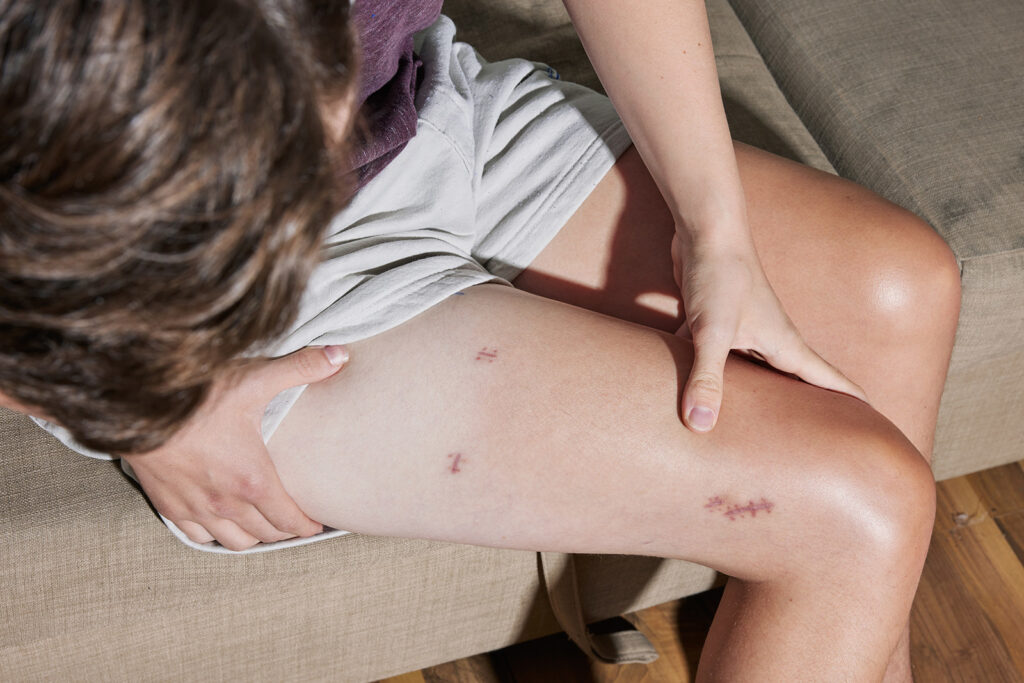Explore the age and health factors that influence candidacy for limb lengthening surgery. Learn about the ideal age, health requirements, and how these factors impact surgical outcomes.

Outline
| Headings | Sub-Headings |
|---|---|
| Introduction | – Understanding Limb Lengthening Surgery |
| What is Limb Lengthening Surgery? | – Basic Overview |
| – History and Evolution | |
| Age Factors in Limb Lengthening Surgery | – Ideal Age for Surgery |
| – Impact of Age on Recovery | |
| – Pediatric vs. Adult Candidates | |
| Health Factors in Limb Lengthening Surgery | – General Health Requirements |
| – Bone Health | |
| – Underlying Medical Conditions | |
| Pre-Surgery Health Evaluation | – Medical History Review |
| – Physical Examination | |
| – Imaging and Diagnostic Tests | |
| Psychological Readiness for Surgery | – Mental Health Screening |
| – Setting Realistic Expectations | |
| Risks and Complications Related to Age and Health | – Age-Related Risks |
| – Health-Related Complications | |
| – Strategies for Mitigating Risks | |
| Success Stories and Patient Testimonials | – Real-Life Experiences |
| – Medical Case Studies | |
| Technological Advances in Limb Lengthening Surgery | – Modern Techniques |
| – Future Innovations | |
| FAQs | – |
| – What is the ideal age for limb lengthening surgery? | |
| – What health factors are important for limb lengthening candidates? | |
| – How does age affect recovery from limb lengthening surgery? | |
| – What are the common health-related complications in limb lengthening surgery? | |
| – How is the pre-surgery health evaluation conducted? | |
| – What advancements are being made in limb lengthening surgery? | |
| Conclusion | – |
Age and Health Factors in Limb Lengthening Candidates: Essential Considerations for Success
Limb lengthening surgery is a complex procedure that requires careful consideration of various factors, including age and overall health. This article explores the critical age and health factors that influence candidacy for limb lengthening surgery, providing insights into the ideal conditions for successful outcomes.
Introduction
Limb lengthening surgery has advanced significantly, offering solutions for individuals with limb length discrepancies and deformities. Understanding the age and health factors that impact candidacy for this surgery is crucial for ensuring the best possible outcomes.
What is Limb Lengthening Surgery?
Basic Overview
Limb lengthening surgery involves the gradual stretching of bones to increase their length. This is typically achieved through a surgical technique known as distraction osteogenesis, where the bone is cut and slowly separated to allow new bone tissue to form in the gap.
History and Evolution
The history of limb lengthening surgery dates back to ancient attempts using rudimentary methods. Modern techniques have evolved significantly, particularly with the development of the Ilizarov method in the mid-20th century, which has paved the way for advanced surgical interventions today.
Age Factors in Limb Lengthening Surgery
Ideal Age for Surgery
The ideal age for limb lengthening surgery is typically during childhood or adolescence when the bones are still growing. However, adults can also be candidates for the procedure if they meet specific medical criteria.
Impact of Age on Recovery
Age can significantly impact the recovery process. Younger patients generally heal faster and have a more robust bone regeneration capacity compared to older adults. Recovery time may be longer for older patients due to slower bone healing rates and other age-related factors.
Pediatric vs. Adult Candidates
Pediatric candidates often undergo limb lengthening to correct congenital deformities and growth abnormalities. In contrast, adult candidates may seek the procedure for post-traumatic limb discrepancies, congenital conditions not addressed during childhood, or cosmetic height enhancement.
Health Factors in Limb Lengthening Surgery
General Health Requirements
Candidates for limb lengthening surgery must be in good overall health. This includes being free from chronic conditions that could complicate surgery or recovery, such as uncontrolled diabetes or cardiovascular diseases.
Bone Health
Healthy bone quality and density are essential for successful limb lengthening. Conditions like osteoporosis can hinder bone healing and regeneration, making it crucial to assess and optimize bone health before surgery.
Underlying Medical Conditions
Underlying medical conditions must be carefully managed before and after surgery. Conditions like anemia, thyroid disorders, or autoimmune diseases can affect healing and recovery, necessitating a thorough medical evaluation.
Pre-Surgery Health Evaluation
Medical History Review
A comprehensive review of the patient’s medical history helps identify any conditions that could impact the surgery or recovery process. This includes previous surgeries, chronic illnesses, and current medications.
Physical Examination
A thorough physical examination assesses the patient’s overall health and the specific characteristics of the limb discrepancy. This examination helps in planning the surgical approach and identifying any potential complications.
Imaging and Diagnostic Tests
Imaging studies, such as X-rays, CT scans, and MRIs, provide detailed information about the bone structure and help plan the surgical procedure. These tests are crucial for assessing bone health and planning the precise cuts and adjustments needed during surgery.
Psychological Readiness for Surgery
Mental Health Screening
Mental health screening is essential to ensure that candidates are psychologically prepared for the demands of limb lengthening surgery. This includes evaluating the patient’s understanding of the procedure, potential risks, and recovery process.
Setting Realistic Expectations
Setting realistic expectations is crucial for patients undergoing limb lengthening surgery. Understanding the potential outcomes, risks, and the recovery timeline helps patients prepare mentally and emotionally for the journey ahead.
Risks and Complications Related to Age and Health
Age-Related Risks
Age-related risks include slower bone healing, increased susceptibility to infections, and longer recovery times. Older patients may also face higher risks of complications such as joint stiffness and reduced mobility.
Health-Related Complications
Health-related complications can include infections, blood clots, nerve damage, and issues related to underlying medical conditions. Managing these risks requires a comprehensive health evaluation and careful monitoring throughout the surgery and recovery process.
Strategies for Mitigating Risks
Mitigating risks involves a multidisciplinary approach, including optimizing the patient’s health before surgery, using advanced surgical techniques, and providing thorough post-surgery care. Regular follow-up appointments and physical therapy are crucial for addressing any complications early and ensuring a successful recovery.
Success Stories and Patient Testimonials
Real-Life Experiences
Many patients have shared their success stories following limb lengthening surgery. These testimonials highlight the transformative impact of the procedure on their mobility, quality of life, and self-esteem.
Medical Case Studies
Medical case studies provide valuable insights into the outcomes and challenges of limb lengthening procedures. These studies contribute to the continuous improvement of techniques and patient care.
Technological Advances in Limb Lengthening Surgery
Modern Techniques
Modern techniques in limb lengthening surgery include advanced external fixators, motorized internal lengthening nails, and minimally invasive surgical methods. These innovations have improved precision and patient comfort.
Future Innovations
Future innovations in limb lengthening surgery may include the use of robotics, 3D printing, and regenerative medicine to enhance the precision, safety, and outcomes of the procedures.
FAQs
What is the ideal age for limb lengthening surgery?
The ideal age is typically during childhood or adolescence when bones are still growing, but adults can also be candidates if they meet specific medical criteria.
What health factors are important for limb lengthening candidates?
Important health factors include overall good health, healthy bone quality and density, and the absence of chronic conditions that could complicate surgery or recovery.
How does age affect recovery from limb lengthening surgery?
Younger patients generally heal faster and have a more robust bone regeneration capacity, while older patients may experience slower recovery and a higher risk of complications.
What are the common health-related complications in limb lengthening surgery?
Common complications include infections, blood clots, nerve damage, and issues related to underlying medical conditions.
How is the pre-surgery health evaluation conducted?
The evaluation includes a medical history review, physical examination, and imaging studies to assess bone health and plan the surgical procedure.
What advancements are being made in limb lengthening surgery?
Advancements include motorized internal lengthening nails, minimally invasive techniques, and potential future innovations like robotics and regenerative medicine.
Conclusion
Understanding the age and health factors that influence candidacy for limb lengthening surgery is crucial for ensuring successful outcomes. By considering these factors and preparing appropriately, patients and healthcare providers can work together to achieve the best possible results.



